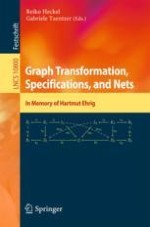2018 | OriginalPaper | Buchkapitel
Initial Conflicts and Dependencies: Critical Pairs Revisited
verfasst von : Leen Lambers, Kristopher Born, Fernando Orejas, Daniel Strüber, Gabriele Taentzer
Erschienen in: Graph Transformation, Specifications, and Nets
Aktivieren Sie unsere intelligente Suche, um passende Fachinhalte oder Patente zu finden.
Wählen Sie Textabschnitte aus um mit Künstlicher Intelligenz passenden Patente zu finden. powered by
Markieren Sie Textabschnitte, um KI-gestützt weitere passende Inhalte zu finden. powered by
